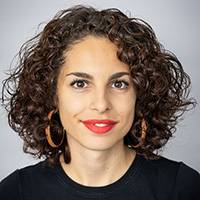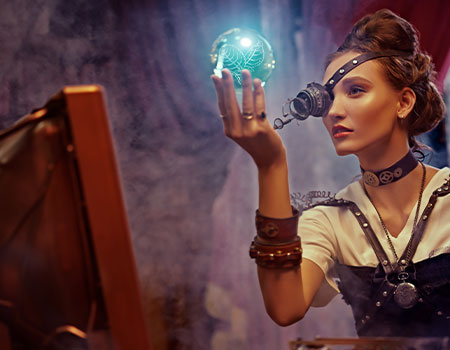Artificial intelligence: definition
Even though the term Artificial intelligence (AI) was mentioned for the first time in 1956 at a conference at Dartmouth College (USA), we had to wait until 1996 to see Deep Blue, IBM’s supercomputer, beat world chess champion Garry Kasparov, marking the takeoff point of the field.
Since then, AIs have advanced and are now used in the 7th art (film making) or medicine. An AI can create a written summary of a film based on the actions and the actors on the screen or predict the most effective molecules for the development of new drugs.
In a nutshell, artificial intelligence is a set of techniques enabling computers to act at levels of intelligence comparable to those of humans.
Technologies such as machine learning or deep learning are branches of AI. In the case of machine learning, the computer must be told which characteristics are to be considered to enable it to solve a given task. In the case of deep learning, artificial neural networks mimic the learning process of the human brain. To do this, the computer itself creates and chooses the most relevant characteristics to solve a given task.
In spite of the power of AI, it cannot exist without human intelligence. AI in fact merely carries out data processing by using rules with a low degree of variability (algorithms) that have been previously defined by real people.
The creation of an AI involves two successive phases: the training or learning phase and the prediction or inference phase. In the training phase, data processed beforehand by humans are subjected to an AI in order to teach it to respond to the task in question. In the prediction phase, the model is supplied with data and it must carry out the task requested: in the example below, the task is to recognize the animal in an image.

Behind every AI, experts have therefore previously categorized the data. This is also called weak AI: clearly able to process a large quantity of information automatically and rapidly, the AIs we use daily are intended to carry out a single task or a set of closely related tasks.
Even though Deep Blue would appear to be intelligent since it could beat a world chess champion, it can’t recognize a cat!
Strong AI, on the other hand, designates an AI that can think and learn on its own. It could also be endowed with emotional intelligence. At the present time, however, strong AI does not yet exist!
Artificial intelligence in cosmetics
The cosmetics industry has not been left behind in terms of AI, that can be used at a number of levels. In the area of regulatory requirements, AI ensures compliance at each step of product development.
In the area of marketing, AI leads to the understanding of market potential. In this case, use is made of the capacity of AI to analyze large quantities of information or big data. For example, by matching the habits of consumers with their personal characteristics, teams can target future consumer needs and also guide them with adapted recommendations.
Consumers are increasingly more hyperconnected and voracious for technological innovations. Major brands of cosmetics therefore compete for connected tools that enable consumers to analyze the quality of their skin, to test a new hair color or to choose a perfume. Often based on facial recognition processes, these tools analyze selfies in order to propose a personalized experience.
As a supplier of active ingredients, the goal of our use of AI is to provide the proof of concept and of the efficacy of our active ingredients. Indeed, when these active ingredients are being developed, our R&D teams generate large quantities of data, in the form of images, numbers or texts.
AI therefore has a dual value: accompany people in the analysis of these big data in order to increase precision and rapidity, and also to use it for volumes of data that are difficult to analyze manually.
True to its vocation of innovation and independence, machine learning and deep learning skills are used in-house by SILAB by a data science unit. Our data scientists work closely with R&D teams to develop our own “made to order” analysis tools adapted to each issue of product development.
In summary, these software tools automatically provide precise and reproducible statistical results in only a few seconds. Applied to LC-OCT images (Line-field confocal optical coherence tomography) acquired in the dermis of healthy volunteers , AI can automatically assign to the image a score of the state of the dermal matrix.
In a study aiming to model the effect of chronological aging and photo-aging on the quality of this matrix, AI carries out a complete and automatic analysis in only 21 minutes, compared to 6 experts being mobilized for almost 5hour for only a more partial analysis. With countless possible applications, the in-house use of this expertise enables SILAB to augment its performance and flexibility.






